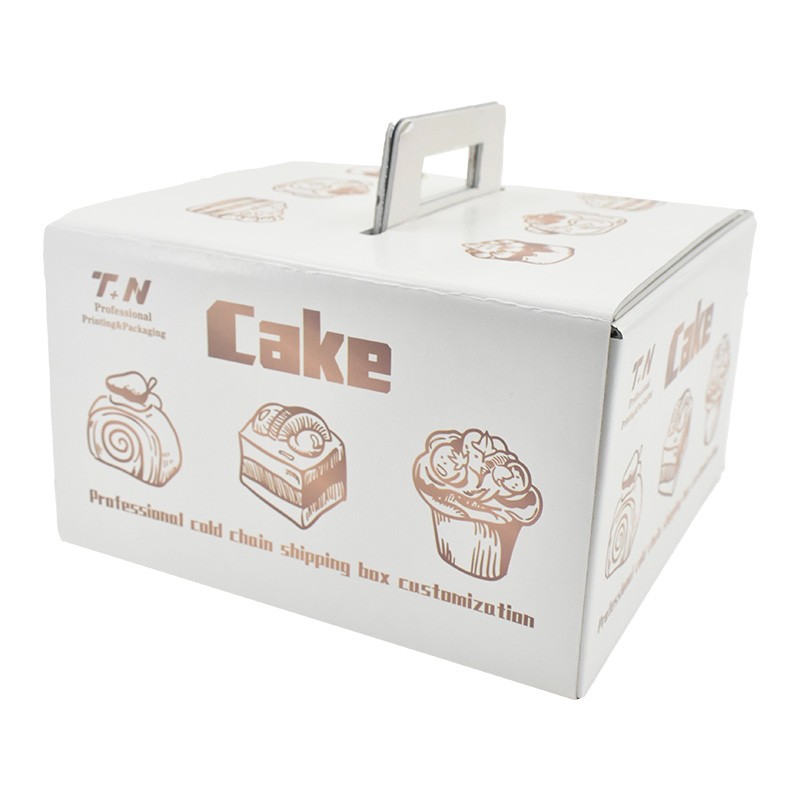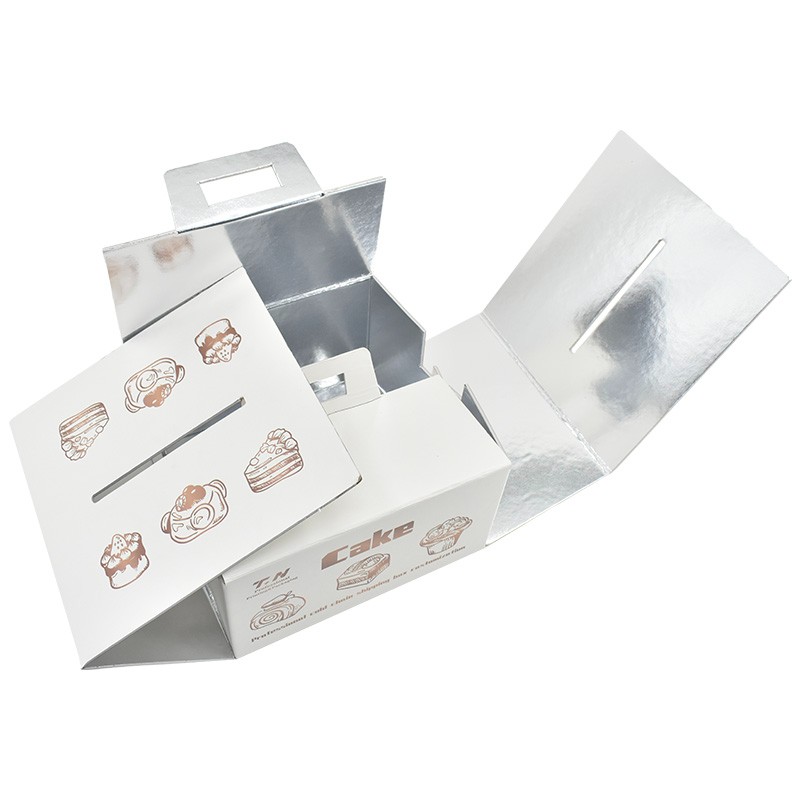Innovative Preservation Techniques in Frozen Foods

Frozen food packaging has come a long way from its simple origins. Consumers now have access to numerous options of frozen foods, thanks to cutting-edge developments in packaging technology. These innovations play a vital role the ability to maintain the freshness of food for extended periods.

One notable advancement frozen food packaging is the use of advanced materials. These materials are designed to prevent passage of oxygen, moisture, and other external factors that can lead to oxidation. Furthermore, some packaging incorporates innovative features that neutralize off-flavors and odors, ensuring the flavor profile of frozen foods remains consistent upon thawing.
The evolution of frozen food packaging continues to shape the industry, offering food manufacturers a range of value-added features. As research and development progresses, we can expect even groundbreaking solutions that will further enhance the preservation of frozen foods, providing consumers with safe options for years to come.
Sustainable Solutions for Frozen Food Containers

As individuals become increasingly mindful of their environmental impact, the demand for sustainable alternatives in various aspects of life is growing. The frozen food industry, known for its simplicity, faces a particular difficulty in finding green packaging methods. Traditional frozen food containers often involve non-biodegradable materials like polyethylene, which contribute to landfill build-up and contamination. To tackle this issue, there is a growing trend on novel sustainable solutions for frozen food.
- Renewable Materials: Transitioning to natural materials derived from sources offers a promising avenue for reducing the environmental burden of frozen food containers. These materials can decompose naturally, minimizing landfill waste and promoting a circular economy.
- Durable Containers: Encouraging the use of reusable containers can substantially reduce the need for single-use packaging. Consumers can invest high-quality, BPA-free containers that are intended to withstand freezing temperatures and repeated use.
- {Edible|Biofilm| dissolvable|Containers: Research into biodegradable films made from natural materials is advancing. These innovative containers could potentially remove the need for any packaging at all, as they would simply be consumed along with the food.
Additionally, implementing efficient production processes and decreasing food waste can contribute to a more sustainable frozen food industry. Finally, by implementing these sustainable solutions, we can develop a more sustainable future for frozen food containers.

Selecting Material Selection for Frozen Food Packaging
Frozen food packaging demands materials that can withstand the rigors of freezing temperatures and maintain product quality. Optimal material selection is crucial for ensuring shelf life and preventing freezer burn, thus preserving taste and nutritional value.
Considerations like barrier properties against moisture and oxygen, heat resistance, and environmental impact play a significant role in determining the ideal material for a given frozen food product.
Commonly used materials include plastic films, corrugated board, and laminated foils. Understanding the unique characteristics of each material is essential for making informed selections that optimize both product protection and purchaser appeal.
Consumer Perceptions about Frozen Food Packaging Design
The success of a frozen food product hinges on many factors, but the design with its packaging plays a vital role in capturing consumer notice. A well-designed package can attract shoppers, communicate meal benefits, and ultimately influence purchasing choices. Understanding consumer views on frozen food packaging design is essential for brands to develop appealing packages that resonate with their target market.
Consumers are increasingly mindful of container sustainability, and they often prefer brands focused to lowering their environmental footprint. Moreover, consumers expect clear and concise labeling that highlight product contents and nutritional value.
Enhanced Shelf Life through Barrier Properties in Frozen Foods
Maintaining the quality of frozen foods during storage is paramount to ensure consumer satisfaction. This necessitates the implementation of effective preservation solutions that effectively mitigate factors contributing to spoilage. Barrier properties play a pivotal role in achieving this goal by reducing the permeation of oxygen, moisture, and other potentially harmful substances into the frozen food.
- Advanced packaging materials often incorporate engineered structures designed to create a robust barrier against these environmental factors.
- By suppressing exposure to oxygen, rancidity can be effectively managed, thus preserving the taste and nutritional value of frozen foods.
- Waterproofing are equally crucial in preventing dessication, which can lead to textural changes and negative impacts on the overall quality.
Consequently, the incorporation of effective barrier properties into frozen food packaging can significantly extend shelf life, reduce food waste, and enhance the reliability of the frozen food supply chain.
The Impact of Packaging on Frozen Food Quality
Preserving the texture of frozen food hinges on the performance of its packaging. Poor packaging can lead to freezer burn, ingredient degradation, and an overall decline in the enjoyment of the product. Conversely, innovative packaging that are impermeable effectively protect the freshness of frozen food, ensuring a satisfying eating experience when thawed.
Emerging Trends in Frozen Food Packaging Technology
The frozen food industry is continually evolving to meet consumer demands for freshness. As a result, packaging technology is playing an increasingly crucial role in ensuring the quality and shelf life of frozen products. Recent trends are shaping this evolution, with a focus on sustainability, efficiency, and consumer experience.
One key trend is the use of sustainable materials.
Suppliers are investigating alternatives to traditional plastics, such as plant-based materials. These sustainable options help to reduce the environmental impact of frozen food packaging.
Another trend is the implementation of active and intelligent packaging technologies. Active packaging utilizes ingredients that absorb unwanted gases or humidity inside the package, extending shelf life and preserving product quality. Intelligent packaging incorporates sensors or indicators that can track the condition of the food and signal consumers when it is no longer edible.
These innovations are not only positive for the environment but also optimize the consumer experience. Packaging that are more functional and visually pleasing can boost sales and customer satisfaction.
As technology continues to advance, we can expect to see even more revolutionary trends in frozen food packaging.
Lowering the Environmental Impact of Frozen Food Packaging
The frozen food industry poses a unique opportunity when it comes to environmental sustainability. Traditional packaging materials for frozen goods, such as plastics, often contribute to landfill overflow and pollute ecosystems. To mitigate this impact, innovative approaches are gaining traction. Recyclable packaging options, along with optimized production processes, are crucial to achieving a more environmentally responsible future for frozen food.
Innovative Designs for Convenient Frozen Food Consumption
Frozen food has evolved significantly recently, offering a convenient and tasty solution for busy individuals. ,Nevertheless the traditional method of reheating frozen meals can be time-consuming. To address this challenge, innovative designers are developing novel solutions to make consuming frozen food significantly convenient.
These breakthroughs range a wide variety of concepts. Some designs emphasize on simplifying the reheating process, while others highlight portion control. ,In addition to this, there's a growing trend toward eco-friendly packaging and heating methods.
One promising example is the development of smart containers that can automatically heat frozen food to the perfect temperature. These containers employ advanced systems to track the heating process, ensuring a appealing meal every time.
Another creative approach is the use of microwave-safe pouches that can be cooked directly in the microwave. This eliminates the need for additional dishes, making cleanup simpler.
These are just a few examples of the exciting designs emerging in the frozen food industry. As technology advances and consumer demand for convenience grows, we can expect even further groundbreaking solutions that will reshape the way we enjoy frozen food.
Guidelines and Standards for Frozen Food Packaging Safety
Ensuring the safety of frozen food is paramount, and packaging plays a crucial role in preserving quality and preventing contamination. To achieve this, regulatory bodies worldwide have established stringent regulations governing the materials used, design, and labeling of frozen food packaging. These criteria aim to minimize the risk of microbial growth, chemical leaching, and physical damage during storage and transportation. Packaging materials must be non-toxic, impermeable to moisture and gases, and capable of withstanding freezing temperatures. Moreover, clear details on the package is essential to inform consumers about proper handling, storage conditions, and potential allergens.
- Key aspects of frozen food packaging safety include:
- Substance selection
- Configuration
- Marking
- Verification
Compliance with these guidelines is vital for protecting public health and maintaining consumer confidence in the safety of frozen food products.
Exploring the future of Frozen Food Packaging Solutions
As consumer demand for convenient and sustainable food options increases rapidly, the frozen food industry is experiencing a dynamic shift. This evolution extends especially to packaging solutions, with a rising need on maintaining nutritional value while reducing waste. The future of frozen food packaging presents compelling opportunities, driven by advances in material science and a collective commitment to create sustainable packaging solutions.
- One noteworthy direction is the widespread implementation of compostable materials, derived from natural sources, which break down naturally minimizing ecological impact.
- Additionally, smart packaging technologies are becoming increasingly popular, incorporating monitoring systems to monitor temperature fluctuations throughout the supply chain.
- In conclusion, the future of frozen food packaging is optimistic, with a strong focus innovation.